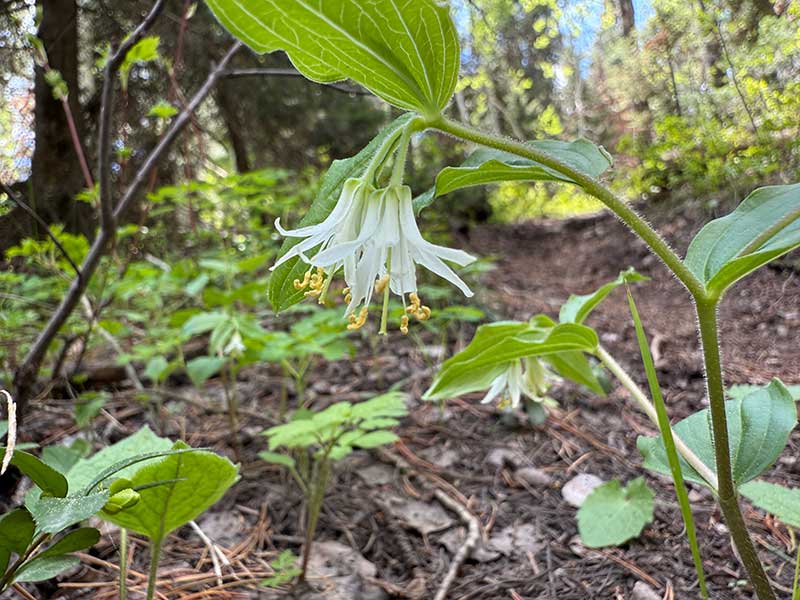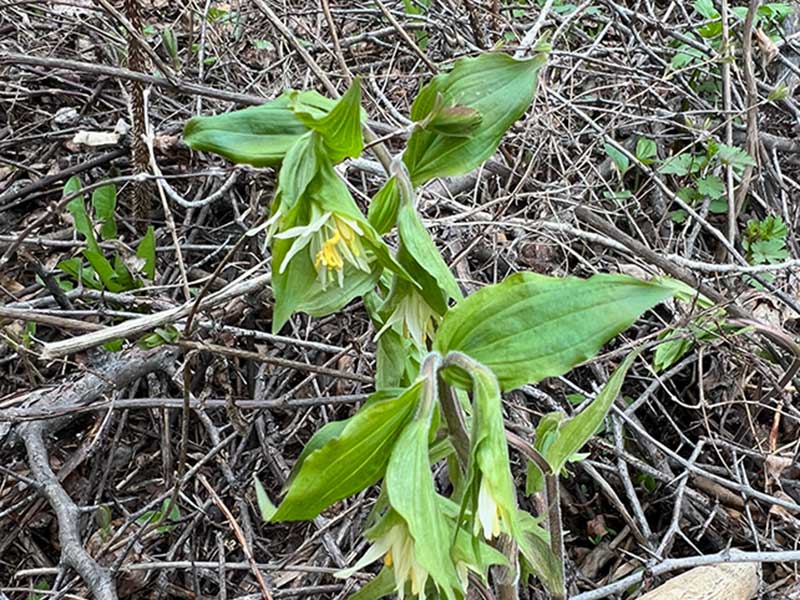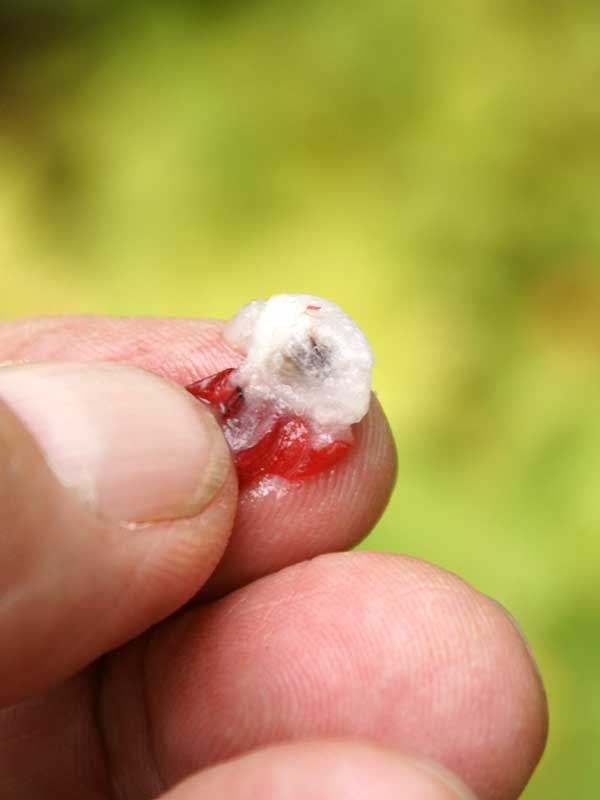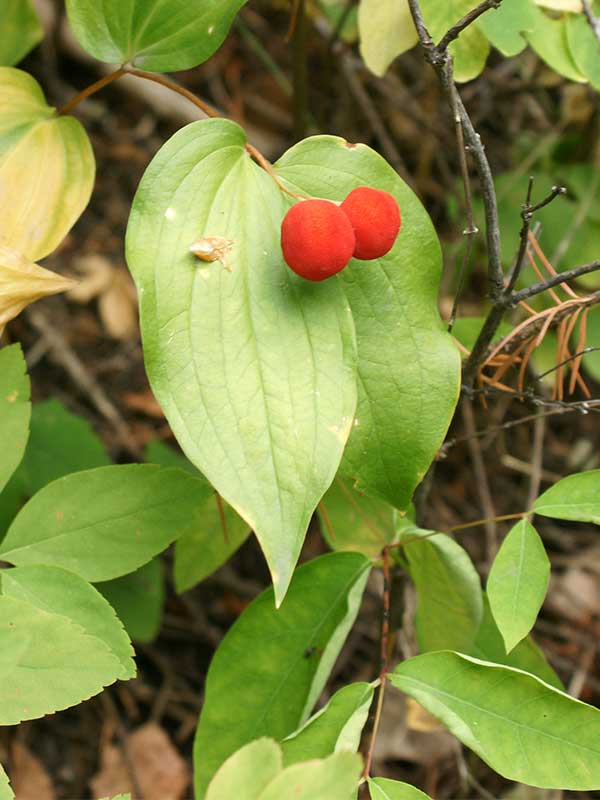Prosartes trachycarpa / rough-fruited fairybells
- heart-shaped, clasping leaves with parallel veins
- pendant white flowers with 6 petals/tepals, often obscured by leaves
- round, yellow then orange then red fruits with rough surface in late summer
- moist forest understoreys
Also known as: rough-fruited mandarin, das Elfenglöckchen (German)
Synonym: Disporum trachycarpum
See also: Maianthemum stellatum / starry false Solomon’s seal, Streptopus amplexifolius / white twisted-stalk
This species is most likely to be seen in late summer or fall, not because it was absent, of course, but because the berries are much more obvious than the flowers. Nevertheless, the flowers are well worth looking for in early spring.
Rough-fruited fairybells flowers are delicate and pendant. They occur singly or in small clusters and look like little bells. They start as closed bells, but once open, they fade rapidly. They have 6 white tepals, sometimes referred to as petals but they aren’t, which are thin and pointy, and 6 yellow stamens. Unfortunately, the flowers are often obscured by the leaves and in some populations, you may find no flowers at all.
In late summer and fall, the fruits appear. They progress from yellow to orange to red as they ripen, and they are typically bumpy (hence rough-fruited). If you squeeze them, you’ll find the seed embedded in a foamy white mass. The berries are larger than chokecherries and about the size of a small grocery-store grape. They are edible, but have been described as “mealy and tasteless “. Grouse and rodents like them more than people do.
The leaves of the fairybells are up to 4 inches long. They have been described as “typically lily-style”, meaning they are wide and almost heart shaped, and especially, they clasp the stem. The veins are prominent and parallel. The stem often makes angular turns at each leaf which, once you’ve seen it, you’ll take as a very good search image. The leaves are “short-hairy” below and hairless above. The stems are also hairy.
Overall, this plant may be as tall as 2 feet, but is often shorter and in the damp understory of coniferous or aspen forests.
Among the Lily family plants in the Valley that might be confused with fairybells are Maianthemum stellatum / starry false Solomon’s seal, and Streptopus amplexifolius / white twisted-stalk. However, the leaves of the false Solomon’s seal are quite linear rather than heart shaped and the flowers are elevated rather than pendant. With regards the twisted-stalk, its leaves are clasping but not [as] heart-shaped, usually. Its flowers are much smaller than those of the fairybells. And in the fall, its berries are much more elongated and hang distinctly beneath the leaves.




